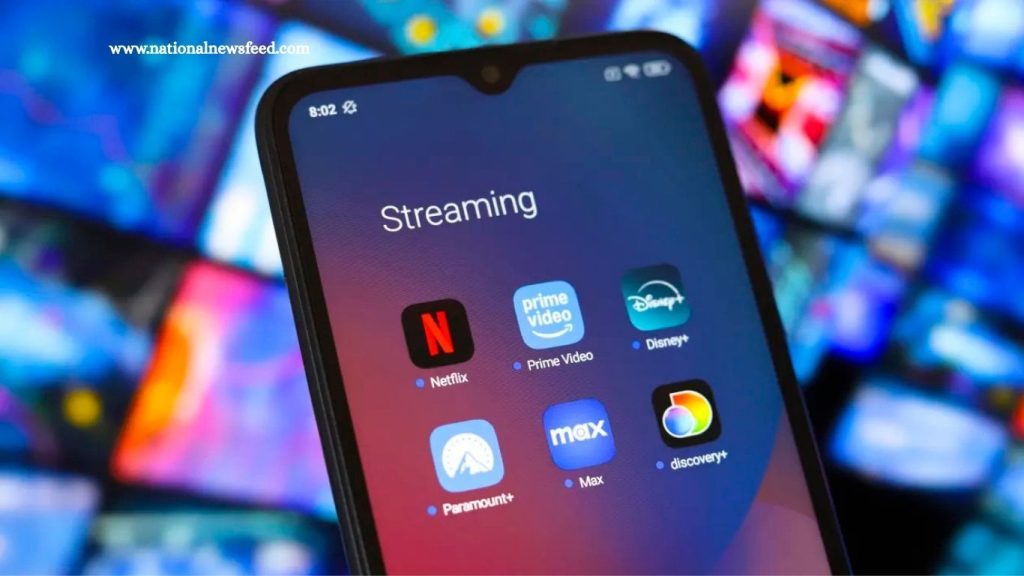In a landmark shift in media consumption, streaming has officially surpassed the combined total of broadcast and cable TV viewership for the first time, according to Nielsen’s latest “The Gauge” report. The report, based on May 2025 data, reveals that streaming claimed 44.8% of all TV viewing, while broadcast and cable together accounted for just 44.2%.
This milestone highlights the rapid evolution of viewer preferences and the transformation of the entertainment industry, driven largely by digital innovation and changing content consumption habits.
Streaming Takes the Lead in TV Viewership
Streaming platforms now dominate how audiences consume television content. In May alone, 44.8% of all TV usage was attributed to streaming services — the highest share since Nielsen began tracking monthly trends in 2021. This shift isn’t just symbolic; it underscores a long-term trend where audiences steadily migrate from traditional TV formats to on-demand and internet-based platforms.
Broadcast accounted for just 20.1%, and cable fell to 24.1%, marking a continued decline for legacy television formats.
Read More: Streaming surpasses combined broadcast and cable viewing for first time ever
A Four-Year Shift: Streaming Up, Cable Down
Since Nielsen started releasing monthly viewership data, streaming has grown by a staggering 71%. In stark contrast, broadcast TV has declined by 21%, and cable usage has dropped by 39%. These figures reflect a dramatic transformation in audience behavior.
Several factors have contributed to this shift, including:
- The growth of Free Ad-Supported Streaming TV (FAST) channels
- The rise of dominant platforms like YouTube
- Legacy media companies transitioning to digital-first strategies
YouTube: The Streaming Powerhouse
Among all streaming platforms, YouTube has emerged as the undisputed leader. Excluding YouTube TV, YouTube represented 12.5% of total TV viewing in May — the highest share for any streaming service to date. This marks YouTube’s fourth consecutive monthly increase.
What makes YouTube’s growth notable is its dual appeal: it offers content ranging from user-generated videos to premium offerings and is completely free, making it accessible to a broad demographic.
FAST Channels Driving Growth
Free Ad-Supported Streaming TV (FAST) services like Pluto TV, Tubi, and Roku Channel have been major growth engines. Collectively, these platforms contributed 5.7% of all TV viewing in May — more than any single broadcast network. Their no-cost model and increasingly diverse content libraries have made them a popular choice among cord-cutters and budget-conscious viewers.
Legacy Media Embraces Streaming
Traditional media giants are adapting to the streaming era. Platforms such as Hulu, Peacock, and Paramount+ are designed to complement, rather than replace, linear television. Major events like the Super Bowl and the upcoming 2024 Olympics are now broadcast simultaneously across both traditional TV and digital platforms, reflecting a hybrid distribution strategy.
Additionally, companies like Disney are using YouTube to build engagement through short-form content while promoting their flagship streaming service, Disney+.
Industry Shakeups and Strategic Restructuring
Major media organizations are restructuring to align with streaming-first models. Warner Bros. Discovery is splitting into two distinct companies — one focusing on studios and streaming, the other on global networks. Similarly, Comcast plans to spin off most of its NBCUniversal cable channels, including CNBC.
These moves signal a broader industry pivot toward digital transformation and agile content delivery strategies.
Netflix Maintains Its Edge in Paid Subscriptions
While free services have surged, Netflix remains the leader among paid subscription platforms. The company has seen a 27% increase in viewership over the past four years and consistently ranks as the top paid streaming provider in total TV usage.
Netflix’s investment in original content and global expansion strategy continues to solidify its dominance in the subscription-based streaming market.
Will Streaming’s Lead Hold?
Despite the current milestone, Nielsen notes that fluctuations are expected — especially during major live sports seasons like football. Still, the long-term outlook remains clear: streaming is poised to become the permanent frontrunner in how audiences consume television content.
Frequently Asked Questions
What does Nielsen’s “The Gauge” measure?
Nielsen’s “The Gauge” is a monthly report that tracks TV viewership trends across different platforms, including streaming, cable, and broadcast.
What are FAST channels?
FAST (Free Ad-Supported Streaming TV) channels like Tubi, Pluto TV, and Roku Channel provide free content supported by advertisements.
How significant is YouTube in TV viewing?
YouTube led all streaming platforms in May 2025 with a 12.5% share of total TV viewing, making it the most-watched streaming service.
Are broadcast and cable TV dying?
While not dead, both are in decline. Viewership for broadcast and cable has fallen 21% and 39%, respectively, over the last four years.
Why are more people switching to streaming?
Streaming offers flexibility, variety, and cost-effective options, including free services and on-demand viewing.
Which streaming service is the top paid platform?
Netflix remains the leading paid subscription platform in terms of TV viewing time, with consistent growth over the past four years.
How are traditional media companies adapting?
Legacy media firms are restructuring, launching their own streaming services, and offering simultaneous broadcasts across platforms.
Will streaming always stay ahead?
While seasonal variations (e.g., sports events) may temporarily boost traditional TV, the long-term trend favors streaming dominance.
Conclusion
The shift in viewer behavior from traditional TV to streaming marks a new era in media consumption. With streaming now officially surpassing broadcast and cable combined, the industry is experiencing a pivotal transformation. YouTube, FAST platforms, and strategic moves by legacy media companies all point to a future where streaming isn’t just an alternative — it’s the default.
As content delivery continues to evolve, media companies must stay agile, invest in digital-first strategies, and understand the changing preferences of modern audiences. The future of television is here — and it’s streaming.

